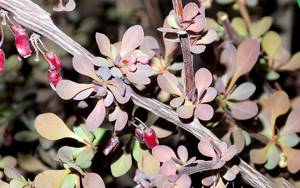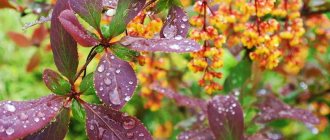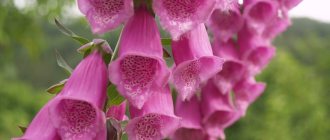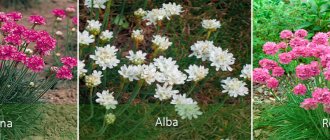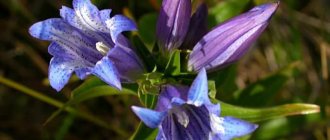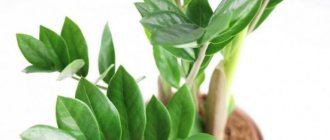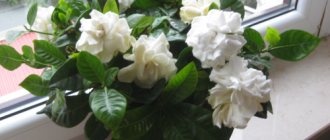A genus of plants such as barberry (Berberis) is directly related to the barberry family, and it is represented by shrubs and trees. The name barberry comes from the Arabic word “beiberi”, which translates as “shell-shaped”. The greatest prevalence of barberry in natural conditions is observed in the mountainous regions of the Northern Hemisphere. This genus includes 170 species of various plants, some of which are cultivated by gardeners. Delicious jam and drinks are prepared from barberry fruits, and the plant is also used to make medicines at home. This plant also has a rather spectacular appearance. The leaves of varietal barberries can be painted in different colors, for example, green, purple, yellow, and they can also be variegated, spotted or have a border. Still different types and varieties can differ in the height of the bush, which varies from 30 to 300 centimeters.
Features of barberry
Such a shrub can be evergreen, deciduous or semi-evergreen. It has spines, as well as leathery or simple alternately arranged leaf plates. The spines are modified leaves, with only the central vein remaining. In the axils of the spines, short stems develop, because of this, the leaf plates are collected in a kind of bunches. On this year's stems, the leaf blades are arranged singly in a spiral. Small fragrant flowers of golden yellow or orange color interspersed with red. As a rule, flowers are part of racemose or corymbose inflorescences, but in some cases single ones are also found. Each petal has a pair of nectaries. When barberry blooms, bees flock to the scent of the flowers; this plant is considered a good honey plant. Depending on the type and variety, the fruits can have different shapes and colors. This plant grows well in the city, as it is distinguished by its unpretentiousness and resistance to drought. Barberry also grows and develops excellently in any soil. This plant is excellent for creating a hedge.
Barberry. Features of barberry thunberg. Caring for barberry.
Botanical description
Today there are more than 170 species of barberry shrubs in the world, planting and caring for which is not difficult even for a novice gardener. Some plants are semi-evergreen creeping shrubs, others are evergreen, and others are deciduous. The leaves of the shrub can be alternate, simple or leathery. By the way, few people know, but barberry spines are also leaves, but in a modified form, consisting of one vein, pointed at the end. Below is a photo of a barberry bush grown in Russia.

Yellow-golden or orange-red barberry flowers are small in size but have a rather fragrant aroma. In most cases, they are collected in corymbose or racemose inflorescences, but they can also be solitary. The plant is an excellent honey plant, which attracts bees from all over the area. Depending on which variety is used for cultivation, the fruits will differ in color and shape. However, they all have a lot of useful properties, since they contain a large number of microelements and vitamins. Because of this feature, the fruits of the barberry bush, the photo of which is given above, are widely used in traditional and folk medicine. Preparations based on these berries help get rid of many diseases.
How to plant barberry
What time to plant
As a rule, barberry seedlings are planted in the spring after the soil has completely thawed. However, planting must be done before the buds open. However, in some cases, planting can be done in the autumn. Or rather, at a time when massive leaf fall occurs. This low-maintenance plant can be grown in a semi-shaded place, as well as in an open area, as it is not afraid of gusts of wind and drafts. It should be remembered that species and varieties with purple leaf blades look much more impressive if they grow in a sunny area. The most suitable soil is neutral, but barberry grows and develops quite normally in soil with a pH of less than 7. If the soil is excessively acidic, then lime will need to be added to it. You can apply the necessary fertilizers several months before planting a seedling, or immediately before planting. So, you need to add 100 grams of superphosphate, 200 grams of wood ash, 400 grams of slaked lime and 8 to 10 kilograms of garden soil mixed with compost or humus into the hole.
Landing Features

If you plant bushes individually, then you should maintain a distance of 150 to 200 centimeters between them. If such a bush is used to create a hedge, then no more than 2 bushes are planted per 1 linear meter. Planting holes must be prepared 14–20 days before planting. The size of such a pit should be 40x40 centimeters, while the depth of the trench for the hedge is 0.4 meters. To improve the aeration of the root system, you should fill the bottom of the hole or trench with a layer of sand. If the soil is neutral or slightly acidic, then before planting barberry, the fertilizers listed above should be added to it, but there is no need to add ash and lime. After the hole is prepared, a seedling is placed in it and the required amount of soil is poured in, which is then compacted. After this, the plant should be watered with plenty of water, and the surface of the trunk circle should be sprinkled with a layer of mulch (compost or peat). After the barberry is planted, it is necessary to cut off that part of it that is located above the ground surface. However, it should be noted that the remaining part should have from 3 to 5 well-developed buds.
Planting barberry
In order for the seedlings to develop well, bloom and bear fruit profusely, it is important to carefully consider the choice of planting site and soil preparation. For barberry, soil that has normal acidity is most suitable; if its pH is more than 7.0, it is recommended to add slaked lime before or during planting.

Barberry seedling
The optimal distance between bushes when planting alone is 1.5 m, when creating a hedge - 0.5 m. Barberry does not tolerate stagnant water, so it should be planted in the highest places of the site and the soil should be drained by adding sand to improve aeration of the plant's root system.
Attention! Despite its hardiness and unpretentiousness, barberry is light-loving; when planted in the shade, the bright shades of the color of its leaves fade, and decorative elements on the leaves for which this plant is especially valued may disappear: spots, stripes and other patterns.
Boarding order:
- A planting hole with sides 40 x 40 x 40 cm is being prepared.
- A small layer of sand is placed at the bottom of the pit, then a mixture of turf soil with 8-10 kg of humus or compost. If organic fertilizers are not available, mineral fertilizers can be used instead (200 g of superphosphate and 100 g of potassium sulfate). If the soil pH is high (high acidity), 400 g of lime or 200 g of wood ash are added to it.
- The plant is placed in a hole, the free space is filled with prepared earthen mixture, watered abundantly, and the surface is mulched with peat or compost. The root collar of the bush should be at the level of the ground surface.
- The top of the plant is cut off, leaving 3-5 strong buds at the bottom.
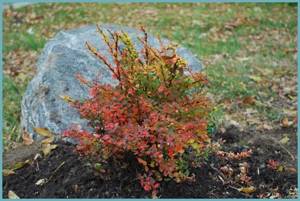
The best time to plant or replant it in the fall is from September 15 to October 15, in the spring - from the 20th of March to April 15. Plants that are in a container when purchased can be planted in the summer, choosing a non-hot day and protecting them from direct sunlight during the first days.
Barberry care

Growing
Even a person who is new to gardening can grow barberry. The fact is that it is extremely unpretentious and undemanding in care, while all types and varieties must be cared for in exactly the same way. For example, caring for Thunberg barberry, which is most often grown as an ornamental shrub, is completely identical to that used when growing varieties with edible fruits. In this regard, it is enough just once to thoroughly study how to properly grow such a shrub, and then you will be able to grow its various types and varieties.
Caring for barberry consists of watering, pruning, loosening the soil, removing weeds and timely feeding. If the summer period is characterized by long dry periods, then during them watering should be carried out once every 7 days, using cool water, which should be poured directly under the root, trying to ensure that the liquid does not end up on the surface of the leaf plates. If there is enough rain in the summer, then watering this shrub is not necessary. Newly planted plants should also be watered once a week until they get sick and begin to grow. If the summer is excessively rainy and damp, then this can cause rotting of the barberry root system, since it reacts extremely negatively to the accumulation of liquid in the soil. Do not forget to promptly pull out all the weeds, as well as the shoots that grow near the bush in large quantities. You should also be sure to loosen the soil surface. To reduce the amount of weeding, loosening the soil and watering, you need to sprinkle the surface of the soil with a layer of mulch (sawdust, peat or nut shells).
Top dressing

The amount of fertilizer that is added to the soil during planting is enough for about 12 months. With the onset of the next spring, barberry should be fed with nitrogen-containing fertilizer, for example, a urea solution is used for this (per 10 liters of water from 20 to 30 grams of the substance). In subsequent years, barberry will need to be fed with nitrogen-containing fertilizer once every 3 or 4 years. However, if this shrub is grown for fruit production, then when flowering ends and at the end of the season, potassium and phosphorus will need to be added to the soil (15 grams of superphosphate and 10 grams of potassium fertilizer are taken per bush). For feeding, you can use a complex fertilizer such as Kemira-universal. This fertilizer should be applied to the soil in the first days of July, using 15 grams of the substance per 10 liters of water.
Trimming

During pruning, it will be necessary to cut off those shoots that are affected by any disease or pests, as well as weakened, dried out, and also those that contribute to thickening. If the species is decorative, then the first time it needs to be pruned in the spring when it reaches one year of age. In this case, you need to cut off 1/3 or 2/3 of the shoot. In subsequent years, the bush is pruned 2 times a year, namely, in the first days of June and early August. This pruning is both sanitary and formative. Those species and varieties that are undersized do not need to be pruned.
Diseases and harmful insects

Pests such as barberry sawfly, barberry aphid or flower moth can harm this shrub. A bush infected with aphids begins to wrinkle and dry out its leaf blades. The moth poses a great danger to those species that have edible fruits, because it feeds on them. To exterminate aphids, use a solution of laundry soap (300 grams of substance per bucket of water). To destroy sawfly caterpillars, as well as moths, it is necessary to treat the bush with a 1–3% chlorophos solution.
In most cases, these shrubs are subject to infection by fungal diseases, such as rust, leaf spot, powdery mildew, bacteriosis or wilt. In a bush infected with powdery mildew, a whitish powdery coating appears on the surface of the leaf blades, berries and stems. Closer to autumn, cleistothecia appear in areas of the plant that are affected by the disease, and the fungus will survive wintering well in them. In order to get rid of such a disease, you should treat it with a solution of colloidal sulfur (1%). Those stems that are very damaged must be cut off and destroyed. As a rule, rust appears on those bushes that grow near cereal plants. On an infected specimen, orange spots appear on the front side of the leaves, while red convex pads form on the back side. In case of severe infection, the leaf plates dry out and fall off. You can get rid of this disease by treating it with a special solution, which is carried out 3 times. To do this, use a solution of Bordeaux mixture or colloidal sulfur (1%). The first treatment is carried out immediately after all the buds open and the leaves grow, and subsequent treatments are carried out with a break of 20 days.

When infected with leaf spot, spots of various shapes appear on the leaf blades, due to which the plant loses its decorative appearance. To get rid of the disease, a solution of copper oxychloride is used (30 to 40 grams per bucket of water). Treatment should be carried out before the barberry blooms and after flowering has ended. In a bush infected with wilt, the leaves and stems become limp and dry out. In this case, wilting begins on one side, and then gradually spreads throughout the plant. To prevent the disease from affecting the entire bush, it is necessary to cut off the infected stems in a timely manner. Also, at the initial stage of wilting development, copper oxychloride or Bordeaux mixture will help get rid of it. For preventive purposes in the spring, the bushes should be sprayed with Bordeaux mixture. When infected with bacteriosis (bacterial cancer), tumors and cracks appear on the bush, and it begins to grow. If bacteriosis has affected only the upper part of the stem, then it must be cut off, while capturing healthy tissue. However, if the cancer appears on the lower part of the stem, which is located next to the trunk, then the entire bush will become infected. Infected areas must be cut off and destroyed, then the entire bush must be treated with Bordeaux mixture or another product that contains copper.
Barberry: beneficial properties and contraindications
Sweet and aromatic barberry is especially valued for its composition. After all, the vitamins, microelements and bioactive substances that these berries contain are extremely beneficial for the human body.
The composition of barberry berries includes the following chemical elements:
- vitamins A, B, K, C;
- carotenoids;
- pectin;
- tannins;
- organic acids;
- resins and ash;
- alimentary fiber.
The nutritional value of the berries is as follows:
- proteins - 0 g;
- fats - 0 g;
- carbohydrates - up to 8g;
- water - 85%.
Per 100 grams of product - 30 Kcal.
These are truly dietary berries, in which there is nothing superfluous, but only valuable components that nourish the human body with strength and health.
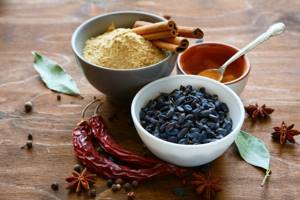
Benefits of berries
Barberry berries are endowed with a lot of healing and preventive properties. Their benefits can be considered truly significant for the human body.
The following positive effects are observed as a result of consuming barberry berries and juice:
- strengthening the immune system, strengthening the body’s protective properties against viral, bacterial and fungal infections;
- increasing blood clotting, stabilizing the hematopoietic process;
- improving appetite, improving the functioning of the gastrointestinal tract;
- cleansing the body of waste and toxins;
- improved performance, mood;
- increasing the resistance of the nervous system to stress;
- muting pain, relieving spasms.
These are only basic, but not exhaustive characteristics of the action of barberry berries. The benefits of consuming the fruits of this plant are versatile and multifaceted. And the bonus is a pleasant taste and aroma. This medicine is much more pleasant to use than medicinal herbs, which are bitter, astringent and have an overly original aroma.
Contraindications
Despite all the variety of positive qualities, barberry berries cannot be called impeccable. There are a number of situations in which the fruits of the plant in question cannot be eaten.
The following contraindications are considered conditional or absolute:
- pregnancy and lactation;
- diseases of the kidneys and other organs of the urinary system;
- cholelithiasis;
- heavy bleeding during menstruation, menopause in women;
- severe depression of the nervous system;
- individual intolerance to the product;
- children under 5 years of age;
- some types of hepatitis.
The fact is that eating barberry berries can cause a number of negative reactions from the human body:
- dizziness, nausea;
- a sharp decrease in blood pressure;
- nosebleeds, increased periodic bleeding in women;
- lethargy, lethargy, drowsiness;
- swelling, urticaria;
- tone of blood vessels and uterine tissue in pregnant women;
- convulsions.
Of course, such undesirable consequences arise under unfavorable circumstances and in the event of a significant excess of berry consumption.
Also, contraindications should not be neglected and you should definitely consult with a specialist about the permissibility of eating barberry berries in case of chronic diseases.
If there are no contraindications, then it is important to follow the specified standards for the use of these berries in cooking. And the use of barberry in folk recipes is important to coordinate with your doctor.

Barberry propagation
This shrub can be propagated by seeds, as well as by dividing the bush, layering and cuttings. It is worth considering that each such method has both positive and negative sides.
Growing barberry from seeds

To collect the seeds you will need well-ripened barberry fruits. Separate the seeds from the pulp and immerse them in a solution of potassium manganese, where they should spend several minutes. After this, the seeds need to be dried. The seeds are sown in the autumn directly into the student bed, and they need to be planted to a centimeter depth. After the seedlings have a pair of true leaves in the spring, thinning should be done, taking into account that a distance of at least 3 centimeters must be maintained between the plants. Barberries should grow in a training bed for a couple of years, after which they are planted in a permanent place. If you planned sowing in the spring, then the seeds will need to be stratified. To do this, they need to be mixed with sand and placed on a refrigerator shelf (temperature 2–5 degrees), where they should spend from 2 to 5 months. Such seedlings, planted in a permanent place, will bear fruit for the first time 2 or 3 years after the emergence of seedlings. However, it must be taken into account that for the appearance of ovaries, several bushes are needed, located next to each other, since this plant needs cross-pollination.
Propagation of barberry by cuttings

Cuttings are harvested in mid-June, and this procedure must be carried out early in the morning. The leaf plates located at the bottom of the cuttings must be removed, and those at the top must be shortened by ½ part. Then the prepared cuttings must be immersed in a solution of a root growth stimulating agent (heteroauxin, epin or kornevin), where they must remain for several hours. After this, they need to be thoroughly rinsed with clean water and planted in a greenhouse in a moist soil mixture consisting of fertile soil, humus, peat and sand (2: 2: 2: 1). For the greenhouse you will need to make a removable dome, which must be transparent. The plants will remain in the greenhouse for about half a month. The dome must be systematically removed so that the cuttings can be ventilated. When they are completely rooted, the shelter should be removed for good. The cuttings are planted in a training bed, where they should be grown for about 2 years, then they can be planted in a permanent place.
Reproduction of barberry by layering

In spring, a fairly strong annual stem should be selected from the bush among the lower branches. Then it needs to be pressed to the surface of the soil and placed in a shallow (about 20 centimeters) groove, which should be made in advance. Fix the stem, then fill the groove with soil, leaving only the upper part of the shoot on the soil surface. In autumn, the finished rooted cuttings must be separated from the parent plant and replanted for growing.
Reproduction of barberry by dividing the bush

This propagation method is excellent for low-growing barberry species; the plant must be at least 3–5 years old, and its root collar must be at a depth of at least 10 centimeters. In spring, the bush needs to be dug up, and then it is divided into several sections, which should be approximately the same in size. In order to divide the root itself, you may need not only pruning shears, but also a garden saw. Proceed with extreme caution, trying to cause as little damage to the plant as possible. When the bush is divided, all sections must be smeared with crushed charcoal, after which the sections are planted in open ground. In the case when the stems of a specimen begin to branch above the ground surface, this propagation method is not used.
Description of red barberry
Red barberry (Thunberg barberry) is a popular ornamental shrub. Under natural conditions, the plant is found on the open mountain slopes of Japan and China; Barberry came to Europe several centuries ago and immediately began to be used in gardening art.
Part of the popularity of the plant is due to its unpretentiousness. It tolerates drought well and survives in winter (some bushes freeze at low temperatures, but quickly recover).
It is worth familiarizing yourself with the main characteristics of this culture:
- There are many varieties of shrubs - some of them are dwarf and reach a height of no more than 20-30 cm. Other species can grow up to 2 m.
- The trunk and branches of the plant are covered with sharp spines 1 cm long.
- The dense crown consists of small, oval or ovoid leaves in red, orange, and purple shades. As winter approaches, the foliage takes on darker, brownish colors and begins to slowly fall off.

- The plant blooms in late spring and early summer. Flowers can be either single or collected in inflorescences (depending on the variety). They are distinguished by their uneven coloring - red on the outside and yellow on the inside.
- In autumn the bush bears fruit, and abundantly. Barberry berries are red (sometimes coral), elliptical and can remain on the bush all winter. The fruits of the plant are excellent food for many birds.
Barberry is also used in cooking. Dry fruits of the plant are used as a spice (for example, they are added to meat, pilaf and other dishes). Compotes and jelly are prepared from fresh berries. Freshly squeezed (but diluted with water) juice has choleretic properties and saturates the body with minerals and vitamins.
You can even make barberry jam. For the simplest recipe you will need 1 kg of berries and sugar. First, the barberry needs to be filled with water and left for several hours, after which the liquid should be drained.
During this time, you can cook the syrup by dissolving 1 kg of sugar in 2-3 glasses of water. Add the berries to the hot sweet mixture and cook over high heat, remembering to stir constantly with a wooden spoon. As soon as the jam becomes thick, it can be transferred to sterilized jars and sealed with lids. In winter, the delicacy will be a good preventative against colds, as barberry berries improve the functioning of the immune system.
We recommend that you read Blackberry propagation by layering
Barberry in winter

Barberry in autumn
After late autumn arrives, the surface of the tree trunk circle must be sprinkled with a layer of mulch, and the material must be loose (compost, peat or dry leaves).
Wintering barberry

Young specimens that are not yet 5 years old should be covered with spruce branches for the winter, especially if the species is evergreen. In the case when the specimen is quite large, it should be covered for the winter in the same way as a hydrangea or garden rose. To do this, you need to tie the branches tightly with twine (rope), after which a kind of cylinder of metal mesh is built around the bush, and its height should exceed the bush by 10 centimeters. The existing voids inside the constructed structure must be filled with dry fallen leaves, and then the cylinder itself must be wrapped with covering material.
Barberry ordinary care

Caring for the plant is simple and with timely implementation of simple agricultural techniques, your barberry bush will delight you with its appearance for a long time. Care activities include: watering, weeding, loosening, hilling, pruning and fertilizing.
Barberry bushes do not tolerate waterlogging; watering is limited to once a week. Weeding and hilling should be carried out as necessary, preventing the growth of weeds in the area. The method of mulching the soil around a young seedling will save you from unwanted plants. It is enough to fertilize barberry only once a year in early spring. The plant responds well to nitrogen, organic matter and nitroammophoska.
In order for the plant to remain in “shape” for a long time, it is necessary to perform pruning; in addition, decorative pruning will create the appearance of a well-groomed plant and will please you with its appearance. Barberry branches tolerate pruning painlessly, in early spring, as soon as the snow melts, or in late autumn.

When pruning the shoots, make sure that at least four living buds remain on it, so that the branch can continue to grow and not dry out.
The common barberry can be given any shape, thanks to the lush growth and rapid growth of the bush; the bushes look most impressive in the form of a “ball”.
Sanitary treatment of plantings before wintering is mandatory; old, dry and diseased growth is pruned.
Treating the soil with fungicides or a strong solution of manganese will protect the plant from fungal infection. For the winter, young plantings must be mulched or covered with spruce branches.
Adult plants winter well and tolerate low temperatures, but in severe winters, they also need additional shelter, like all garden vegetation.
Types and varieties of barberry with photos and names
There are a large number of types and varieties of barberry, and sometimes it is not so easy for a gardener to make a choice. When choosing a specific type or variety, you need to know exactly what goal you are pursuing and focus on it. If you are going to grow barberries to produce berries, then you should opt for special species. If you need to decorate your garden or create a hedge, then other varieties and types are suitable for this. However, it should be remembered that there are species that can not only become a wonderful decoration for the garden, but also produce a rich harvest of tasty fruits.
Common barberry (Berberis vulgaris)

This species is the main one in this genus. The height of such a bush can reach 300 centimeters. The stems are colored brownish-gray and have tripartite spines two centimeters long. Membranous, thin elliptical leaf plates have a ciliated-serrate edge. Their front side is painted dark green, and their back side is a pale greenish-gray. The length of the racemose inflorescences reaches 6 centimeters; they consist of fragrant glossy yellow flowers. Flowering lasts 14–20 days. There are many rich red berries, which are about 15 mm long. This species has many varieties: albo-variegata - leaf blades of white-variegated color; aureo-marginata - the foliage has a golden border; atropurpurea - leaves are dark purple or red. In the seedless form of barberry asperma, the fruits are very easy to process.
There are several species that have certain similarities with common barberry, for example: Provençal barberry (a hybrid of common barberry and Siberian barberry), spinous - a species from the Himalayas, Canadian, Zimbold's barberry, James's barberry and Diels' barberry.
Thunberg's barberry (Berberis thunbergii)

This is the most spectacular species among deciduous barberries, which stands out for its decorative effect. The height of this shrub can vary from half a meter to a meter. There are horizontally located branches. The deep red or light yellow young stems are arched and branch heavily. Over time, they become brownish-purple or brown. Elastic thin spines are centimeter long. The graceful leaves have an obovate or oblong shape; they reach no more than 30 mm in length. Their front side has a rich green color, and the back side is bluish, and in autumn they change their color to rich red. Flowers can be single or collected in bunches. The inner surface of the petals is yellow, and the outer surface is red. Flowering lasts 7–14 days. The centimeter-long glossy elliptical berries are coral-red in color. They ripen in the first autumn days and become the main decoration of the bush for several months. The fruits contain a large amount of alkaloids, which is why they have a bitter taste, but on winter days birds eat them with pleasure. Planting and growing this species is very simple. This shrub will be an excellent decoration for your garden plot. This species has many decorative forms: multi-flowered (pluriflora), dark purple (atropurpurea), silver-marginated (argenteo-marginata), etc.
The most popular varieties are:

- Golden Ring - reaches a height of 300 centimeters, has a rounded crown. The length of the ovoid leaf plates is about 4 centimeters, they have a dark red-purple color and a yellow border. In autumn they change color to deep red. The centimeter-diameter flowers are collected in bunches (from 2 to 5 pieces), their outer surface is red and the inner surface is yellow. The glossy red-coral fruits ripen in October.
- Red Pilar - columnar form. The bush reaches a height of 150 centimeters, and its crown has a width of about 45 centimeters. The leaf blades are violet-red, and in autumn they become rich scarlet.
- Orange Rocket is columnar in shape. The height of the bush is no more than 1.2 meters, and the width is 0.6 meters. Smooth small egg-shaped leaf plates on this year's stems are orange in color with a yellow edge, while on last year's shoots they are purple-red. Against the background of greenery, such a bush looks very elegant. In autumn, the leaves turn various shades of red.
- Kornik - the height of this deciduous plant is about 150 centimeters. On the surface of the light green leaf blades there are randomly located white-cream spots of various shapes. It looks like the leaves have been splattered with paint. In autumn, the green color of the leaves changes to scarlet red. This variety is recommended to be planted next to conifers, roses or other varieties of barberry.
Ottawa barberry (Berberis x ottawensis)

This decorative hybrid was born as a result of crossing the Thunberg barberry and the atropurpurea of the common barberry. This species is one of the most beautiful representatives of this genus. The height of the bush varies from 150 to 200 centimeters. Externally, such a bush is similar to an enlarged Thunberg barberry, but the color of the leaf blades is similar to the purple-leaved form of common barberry. Thus, the leaves are painted in a dark violet-pink color, which in the sun looks almost black. In autumn, the leaves acquire a crimson color, and they decorate the plant for a long time. This species is characterized by winter hardiness, unpretentiousness, and is also a fast-growing plant.
The most popular varieties are:

- Auricoma is a bush that reaches a height of 250 centimeters. The rounded leaves, five centimeters long, are deep red in spring and summer, and orange in autumn. The length of the racemose inflorescences is about 5 centimeters; they consist of yellow-red flowers with a centimeter diameter. Rich red berries.
- Superba is a bush that can reach a height of 400 centimeters. The length of the rounded leaves is 3–5 centimeters, they have a dark red color with a bluish coating. In autumn, they change their color to different shades of red and orange. Racemose inflorescences consist of red-yellow flowers. The fruits are red.
- Silver Miles - this variety does not look attractive when viewed up close, but when viewed from afar, it is very impressive. On the surface of the purple leaves there are randomly located streaks of dirty gray color. If you look at the bush from a distance, it seems that it is painted lilac.
Also quite popular are barberries such as: Juliana, Beana, Tischler, Morrison, Wilson, greenish, willow, multi-flowered, oriental, Iberian, reticulate, similar, dove-white, boxleaf, notched or unedged, large-thorned, provincial, spring, Ili, coin, Korean, Tibetan, Siberian, transparent, round-serrated, twisted, Amur, Turkmen, whole-edged, oblong, round-fruited, Asian, etc.
Photo of a bush
Red barberry is a beautiful plant that offers a wide variety of varieties. Breeders began to develop new varieties about 100 years ago - now there are more than 50 of them. It is worth considering the most popular plants that are used in decorative arts:
- Golden Ring is one of the most beautiful varieties. The bush can reach 1.5 m in height. Its crown is dense and wide - thanks to this, the plant is often used to create topiary or hedges. The beautiful large leaves are dark purple with a yellowish border along the edges - by autumn they acquire a rich red hue.

- Atropurpurea is a shrub that has been used in gardening and landscape art for more than 150 years. Barberry grows slowly, but can reach 2 m in height. The wide crown consists of small purple-brown leaves that turn dark pink in autumn. The bush looks most impressive in summer, during the flowering period.
- Atropurpurea Nana is a small shrub that grows slowly and reaches a height of no more than 60 cm. The leaves of the plant are small, red, and turn purple in autumn. In April, clusters of reddish-yellow flowers appear on the branches, and in October the fruits ripen (they remain on the branches throughout the winter period).

- Red Chief is a plant with a loose but dense crown that grows at an average pace and reaches 1.8 m in height. The shrub is decorated with shiny narrow beet-colored leaves, which change to orange-brown in autumn. This variety of barberry can also grow in urban environments.
- Orange Rocket is a shrub with a non-standard crown, which is shaped like a column. Although the leaves are small, the crown is dense - in the summer it pleases with red-pink shades, and by autumn it becomes bright red, almost scarlet.
- Harlequin is a bush with a spreading dense crown formed by densely intertwined branches. The color of the leaves distinguishes the plant from other varieties - they are miniature, burgundy, with small pink, white and even gray stripes and spots. This variety loves the sun - in the shade the leaves lose their decorative color. The bush tolerates frost well.

- Bagatelle is a low-growing variety. The spherical crown of the plant reaches no more than 40 cm in diameter. The bush grows slowly - its height increases by no more than 2 cm per year, which is good for creating rock gardens and some other flower arrangements. Throughout the year, the miniature leaves retain a brownish tint, but by autumn they acquire rich crimson tones.
- Burgundy Carousel is a shrub with large leaves that reach 3-4 cm in length. The crown is tall (about 1.5 m) and boasts a naturally rounded shape. Throughout the year, the leaves of the plant retain a rich burgundy color (sometimes with a purple tint).
We recommend that you familiarize yourself with Gooseberry Green Rain
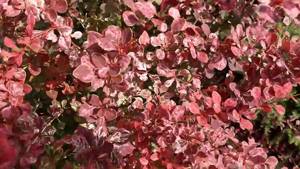
Not all varieties of Thunberg barberry have red foliage. For example, Aurea is a low-growing bush with a bright green or yellowish crown. Variety Maria has a vertical crown and greenish-yellow leaves. And barberry Cobalt is a small bush with rich green leaves, against which red berries that ripen in autumn look good.
Properties of barberry
Useful properties of barberry

Many species and varieties of barberry are grown as garden decorations. However, common barberry is, as a rule, grown to produce fruits from which compotes, liqueurs, marinades, pastilles, jelly, syrups, jams and jellies are prepared. Pickled barberry fruits are used in Armenian cuisine, so they are served with lamb, fried vegetables or rice.
In edible species, the fruits contain tartaric, malic and citric acids, and the leaf blades contain vitamins E and C, as well as carotenoids and mineral salts. The fruits can lower blood pressure, fight psoriasis, tone the body, destroy various infections in the intestines, stop bleeding, and also prevent the growth of lamblia, yeast and other parasites.
All parts of barberry have medicinal properties. Only ripe berries should be collected, because unripe ones contain poison. The berries are dried in a shaded place, and the temperature should not exceed 50 degrees. After this, they are poured into paper bags or cardboard boxes, where they are stored for no more than 3 years.
The plant has anti-inflammatory, choleretic, analgesic, antipyretic, antispasmodic, antitumor, hemostatic, and antibacterial effects. A decoction of the roots relieves inflammation of the gallbladder and promotes the outflow of bile. A decoction of leaf plates is used for various forms of hepatitis, digestive disorders, inflammatory processes in the gastrointestinal tract, diseases of the liver, gall bladder and ducts. A decoction of the bark will help with chronic pancreatitis. The juice of the fruit has a mild laxative effect and improves appetite. Ripe fruits mixed with honey can improve the body's immune system after radiation exposure. A decoction of the roots is used to wash sore eyes, wounds, and areas of the epidermis affected by eczema, and it is also used for lotions, compresses and rubs for radiculitis, arthritis, rheumatism, leg muscle spasms and osteochondrosis.
Description of barberry growth
How barberry grows depends on the planting location, soil composition, and pruning of shoots. Among them there are many resistant and decorative varieties that do well in the weather conditions of central Russia. Dwarf varieties have a thick and dense crown, while tall varieties have a spreading crown. Mature shrubs annually produce an increase of young shoots from 30 to 50 cm. Therefore, plants require regular pruning.
How quickly barberry grows directly depends on its variety. We suggest considering the growth description and characteristics of the most popular shrubs.
Common barberry
The most common bush from the barberry family is used for landscape compositions, as a hedge and for collecting fruits.
Common barberry is tall (up to 2.5 m), branched, with sharp thorns, up to 1 cm in length. On short shoots of the shrub, full-fledged leaves develop, and on long shoots, thorns develop instead of leaves. The shoots are erect, yellow or purple.
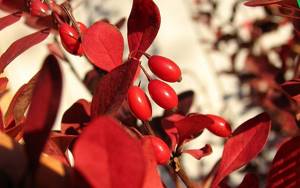
The leaves are collected in long racemes. They are light green in color with a golden outline. In illuminated areas without shade, the leaves become bright, yellowish.
The growth rate is fast. In the first 2 years after planting in the ground, the plant’s root system actively develops, and shoots only grow upward. An adult bush has powerful, highly branched roots. If you plant it in chernozem, highly moist soil, the growth will be average and restrained.
The young bush gives an annual growth of up to 50 cm, when planted in favorable conditions - up to 2.5-3 m in height and 2 m in diameter. To accelerate growth and give the bush a round shape in the second year in the spring, the shoots are cut short, leaving a length of 11-12 cm. In the fall, a wider, dense crown of young shoots grows. It grows to its final height in about 5-10 years. Durability - 50-60 years.
This species is demanding of light, prefers sunny areas, but will also grow in partial shade. However, in this case, the growth rate will slow down, and problems with flowering and fruiting may occur. Frost-resistant.
Barberry Thunberg
The most spectacular species, which is distinguished by the bright color of its leaves. Widely used to form decorative hedges and create compact compositions. Easily amenable to curly pruning. The plant has many different forms and varieties. The fruits are not used in cooking due to their bitter taste.
We recommend that you familiarize yourself with Barberry compote

This shrub is small in height, up to 1 m, in diameter reaches up to 1.5 m. It differs from common barberry in its dense branching in width. The leaves are round, small, 2-3 cm long, bright green in summer and fiery red in autumn. They fall in October.
The growth rate is high. The shrub grows 20-30 cm in 1 year and reaches its final height in 5-10 years. The shoots are a delicate, light green hue. In the first 2-3 years the plant has a vertical crown. In the future, if the bush is not pruned, the crown takes on a beautiful, spreading appearance.
The growing season begins in the second half of April, just like with common barberry.
The bush bears fruit on last year's shoots, the growth of which is 20-30 cm. Fruits are formed the next year. Until 8-9 years of age, growth processes predominate. New shoots are actively developing. By the age of 14-15 years, the plant reaches its final size. Subsequently, the processes of growth and death of shoots are in equilibrium. The longevity of this type of shrub is 50 years.
Amur barberry
This species is close to the common barberry. It is less susceptible to disease than others and tolerates dry summers and frosty winters well. This is a large plant due to the spreading appearance of its branches. The bush is suitable for group plantings and the formation of tall hedges. The roots, fruits and leaves are used medicinally.
Despite their decorative value, varieties of this shrub are less popular among gardeners and landscape designers. This is due to the fact that the plant can reach up to 3.5 m in height. The branches are long, spreading and thin. The shoots have tripartite spines, up to 2 cm in length. The crown is rare.

The leaves are obovate, with a serrated edge, up to 6.5 cm long. In spring, the leaves are green, closer to autumn they acquire a yellow tint, and even later - red.
We recommend that you read Autumn feeding of blackberries
Growth rate is average. In the first 3 years, the shrub produces 7-10 young shoots, because the roots grow and strengthen. In subsequent years, growth accelerates. A bush at 11-16 years old grows up to 1.7-2.2 m, at 25-35 years old - up to 2.5 m. Flowering begins already 1 year after planting in the ground. Fruiting begins at 3-4 years.
Barberry ottawa
This plant is a hybrid of Barberry thunberg and common barberry.
The shrub grows up to 2 m in height. The dark purple color of the small leaves, like those of the Thunberg barberry, persists throughout the summer if the plant is planted in a sunny area. It blooms at the end of May with yellow, racemose inflorescences. Numerous bright red fruits. There are varieties with golden, gray-green and dark purple leaves. All of them are grown for decorative purposes.

An important advantage of this shrub is its high growth rate. The growth of annual shoots is up to 40 cm. Plants begin to bear fruit 5 years after planting. Durability - 50 years. With proper care, decorativeness and fruiting last up to 35-40 years.
The disadvantage of growing this plant is its average winter hardiness. In some regions of Russia, annual shoots can freeze completely.
Areas where barberry grows in Russia
Many people are interested in where barberry grows, besides gardeners’ plots. In the wild, the common species grows in the south of Russia, in the Crimea, where it finds the most favorable conditions for growth and is sometimes found in large groups.
It also grows on the Black Sea coast, on the border with Dagestan. Individual bushes grow in the southern regions of the European part of Russia, but these are rare, wild populations. Found in mountainous and hilly areas of the Caucasus, prefers forest edges and hills.
Thunberg's barberry grows only in the Far Eastern territories of Russia.
The Amur species grows as a single bush or in small groups on the edges of mixed and deciduous forests, as well as along river banks on gravelly soils. Other varieties of barberry are found in deciduous and mixed forests of the Khabarovsk Territory, on ventilated and rocky slopes.
We recommend checking out Raspberry Galaxy
The Siberian species is a characteristic plant for steppe rocky mountain slopes, rocks and placers. It is found in the altitudinal zones of Altai, from the steppe zone to the upper border of the forest. The species is most common in the mountains of the Tannu-Ola, Sangilen, and Tsagan-Shibetu ranges.
